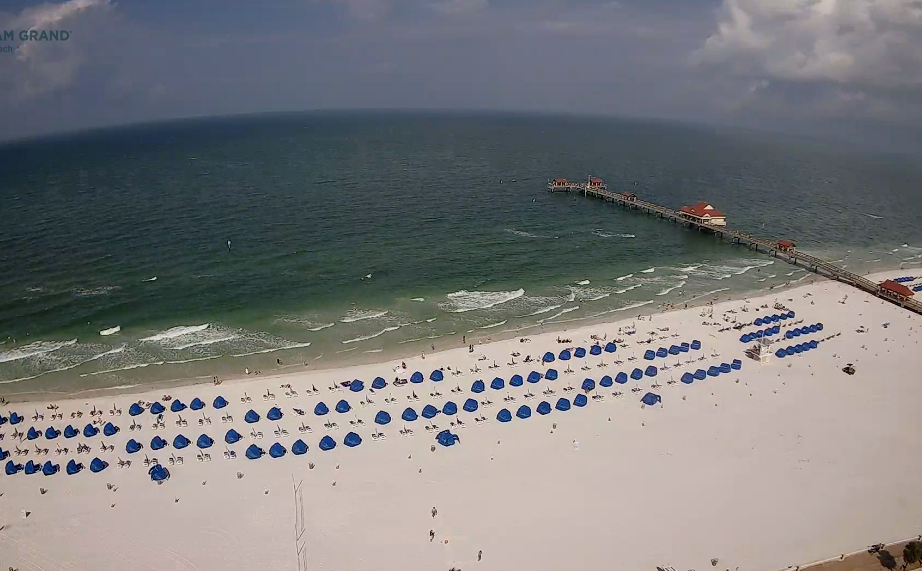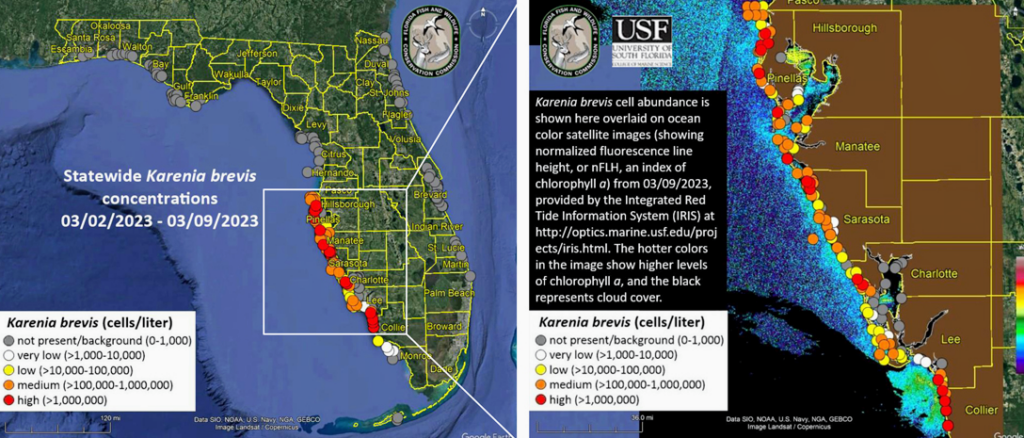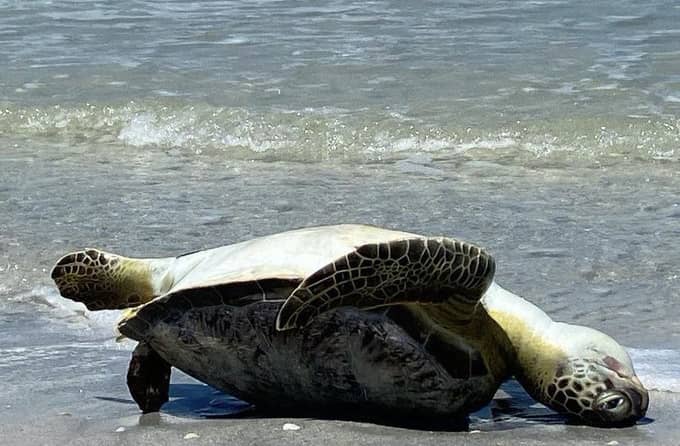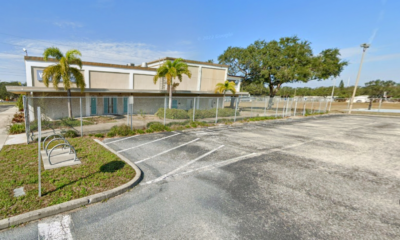Thrive
Persistent red tide now impacting spring break

Harmful algal blooms that have lingered along the Gulf Coast for about five months are increasing in intensity as the local tourism industry enters one of its busiest times of the year.
Spring break has arrived in Pinellas County, with Tampa International Airport officials expecting to set new passenger records. However, those visiting area beaches could experience respiratory irritation and encounter dead fish.
According to the Florida Fish and Wildlife Conservation Commission’s (FWC) latest update, bloom levels of Karenia brevis, the red tide organism, were recently detected in 24 water samples around Pinellas. Its latest status map shows medium and high concentrations from Honeymoon Island near Dunedin to Fort De Soto Park, south of St. Petersburg.
Florida’s entire southwestern coast is now experiencing red tide conditions, which began in October 2022 following Hurricane Ian and atypically persisted through the winter. Jon Paul “J. P.” Brooker, director of the St. Pete-based Florida Conservation Program at the Ocean Conservancy, believes “there’s a good chance” the harmful blooms will remain in the area for the foreseeable future.
“Unless we get some cooler weather,” Brooker added. “Some significant winds that could blow it offshore and dissipate it, possibly some tropical weather that could kind of disperse it.
“It’s a harrowing thing, and no one likes to see these fish kills. I was just down at the beach with my children, and it was awful.”

The latest Florida Fish and Wildlife Conservation Commission Red Tide Status map shows medium to high concentrations throughout Pinellas County. Screengrab.
While Brooker didn’t see any dead fish during a recent trip to Treasure Island, he said runny noses and coughing from the pungent air ruined their beach trip. According to the FWC, medium concentrations of the naturally occurring organism lead to respiratory irritation, shellfish harvesting closures and probable fish kills.
High levels increase the chances of those effects and result in water discoloration. The organization also relayed that it received reports of fish kills and respiratory irritation from Pasco to Monroe counties.
“It is unusual for it to last from one calendar year to the next,” Brooker said. “We’re supercharging red tide. We’re making it worse because of our human-caused nutrient inputs into our coastal waters.”
In addition, Brooker explained warmer water temperatures, which he blamed on human causes, fuel harmful algal blooms. Red tide typically dissipates in winter, but he said the Gulf, on average, is now three degrees warmer.
He said the additional nitrogen, resulting from fertilizers and stormwater runoff, provides the food the organism needs to grow. Warmer water ensures it never becomes dormant and stays “in a bloom state year round now.”
National representatives are also aware of red tide’s local impacts, and Congresswoman Kathy Castor stressed the importance of converting septic tanks to sewers to reduce nutrient levels. She noted the cost associated with those initiatives but said state officials should “put their money where their mouth is on doing it.”
“The overriding issue is that clean water is essential not to just our environment, but our economy,” Castor said. “When people come, and there are toxic algae or red tide sticks around longer because there are more nutrients in the bay or the Gulf of Mexico, that really hurts the visitors who come to our state to enjoy their vacation. It hurts the ability of kids and fishermen to get out on the water.”

A loggerhead sea turtle, dead on St. Pete Beach in 2021. Photo: Florida Kids for Clean Water.
Brooker believes “there is no doubt” local businesses and governments are already seeing economic impacts from the harmful algal blooms. He said fewer people visiting the beaches means fewer tax dollars flowing into municipalities.
Indian Rocks Beach officials recently canceled BeachFest, an annual fundraising event scheduled for April 15, due to red tide conditions. Brooker also noted the financial impact of restoring degraded marine habitats.
“There is definitely an economic argument to invest in fixing these problems now before the cost becomes too great,” he added. “And you know, we’re at a point of no return, economically speaking.”
Like Castor, Brooker said residents should engage in the legislative process and demand action from state leaders. Several proposed bills are coming before lawmakers that he said could bolster red tide mitigation efforts.
One, introduced by local State Rep. Lindsay Cross, would establish maximum nutrient daily loads in critical watersheds. Brooker said Cross is “a natural” advocate due to her environmental background.
He also said homeowners should try to convert septic tanks to sewers and reduce fertilizer usage. Zeroscaping, or transitioning lawns to gravel with few to no plants, would reduce nutrient-filled stormwater runoff during hurricane season.
Brooker said he is “incredibly optimistic” that stakeholders can reverse current trends and prevent red tide from becoming a year-round occurrence. He believes Floridians are staunchly committed to protecting the state’s “showcase,” its marine environment.
“I’m very confident that Floridians from all walks of life, across the political spectrum, will rally, and are rallying, to address these issues,” Brooker said. “Because it’s not a lost cause. It’s a matter of deciding to do it, acting to do it, dedicating resources to do it – and arguing for those resources. I think you’re seeing more folks taking that all-hands-on-deck approach.”








Lori
March 22, 2023at8:24 pm
I was in St Pete 3 years ago. That beautiful ocean had fish fighting for life, as they floated to the top. It’s called red for a reason, but the smell was more overwhelming than then any River anywhere!! Pray for the ocean and want lives in it.
Donna Haycook
March 20, 2023at6:52 pm
We all remember how bad the 2 hurricanes were this year. The sea tossed cars, houses and boats..alot of fuel went back to the sea as the tide went out.
This increased the problem. Not alot anyone can do about that.
Cy Ense
March 15, 2023at11:10 am
The biggest catalyst is local municipalities using reclaimed water for irrigation. A terrible, expensive mistake.
Dan Calhoon
March 15, 2023at9:33 am
As sad as the situation is with the red tide and all of the “solutions” suggested, there would be even more problems and anger if everyone’s food prices shot up exponentially because of lack or ban of fertilizer use or mandatory sewer hook up that can reach 40k per home in some instances…so again, as sad and inconvenient as the re-accuring red tide is… this too shall pass.
Mary kinson
March 14, 2023at2:32 pm
It seems to me that the biggest catalyst is lake Okeechobee spilling it’s waters that are full of fertilizer and phosphorus from cattle into the rivers that flow to the coasts. Clean up the lake and you have probably solved almost 50percent of the problem. We have the same issue on lake Champlain in VT. Farmers need to clean up how they are farming!!!! Less fertilizer and less animal waste near waterways!!
Kay
March 14, 2023at10:21 am
Seems no one in charge in Florida gives a damn. Hey DeSantis! You there?
D Neal
March 14, 2023at8:33 am
Very appreciative of your coverage, but please think twice about using two year old file photos of dead sea turtles to bolster the story. The facts are more than enough — and using those images gives naysayers a platform to criticize the work you are doing in spreading the word.
Ann Marie
March 14, 2023at8:22 am
If we could save the golf courses….. you might be able to pass laws that make the commoners STOP using pesticides/fertilizer on their lawns, so there will be enough for the elite’s playgrounds.
Jim
March 14, 2023at4:03 am
This is one of the most comprehensive and honest reports on red tide. Red tide is a natural organism but these blooms are totally unnatural, caused by population growth and its inevitable pollution, as well as climate change. It has never been this warm, in air or water temperature, this early in Florida.
MM
March 13, 2023at8:47 pm
I am coming to St Pete beach in September this year with a large group of people.
Hope its clear by then.
Jim Beggins
March 13, 2023at3:45 pm
Been in Fl real estate since 1073. Our economy is doomed if we don’t stop all development until we fix the problem with no more septic, minimize boat traffic, plant sea grass, clean our springs, stop wasting water, pass new requirements for sewer treatment, etc, etc. This is coming from one who lives by selling real estate. I love my state more than my job!
Paul
March 13, 2023at3:35 pm
“I’m very confident that Floridians from all walks of life, across the political spectrum, will rally, and are rallying, to address these issues,” Brooker said.
Good luck with that Mr. Brooker.
debra fernandez
March 13, 2023at3:08 pm
People don’t care about the environment but perhaps they will listen to the almighty dollar. Let’s hope!